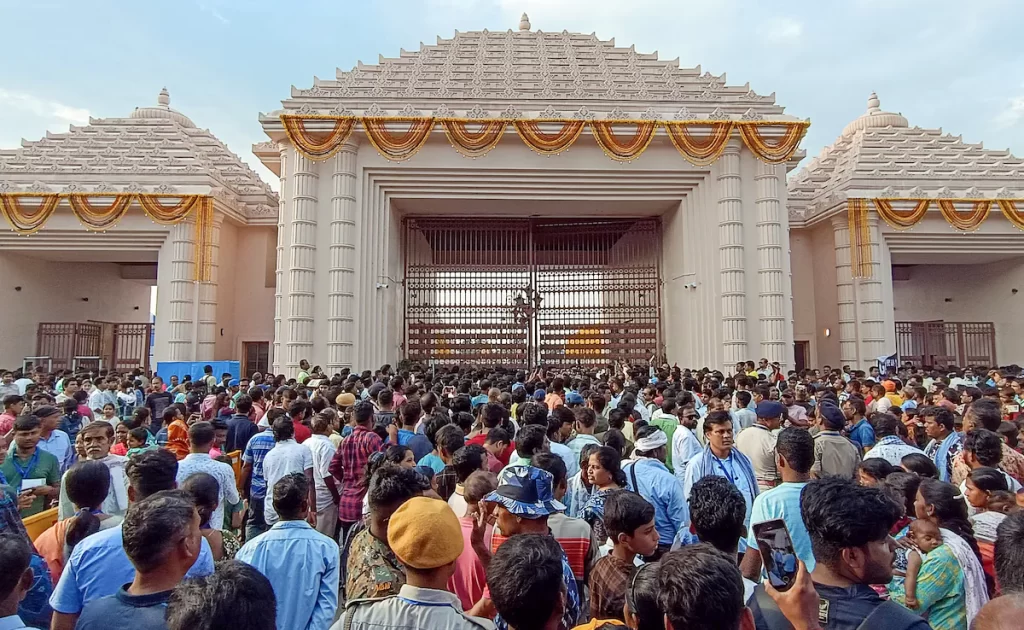BHUBANESWAR – In a historic and culturally sensitive move, the Government of Odisha has initiated the process to secure Geographical Indication (GI) and intellectual property (IP) rights over a set of words intrinsically linked to the Jagannath Temple tradition. The effort comes amid an intensifying cultural tug-of-war with neighboring West Bengal, where similar terminology and rituals have stirred debate over religious heritage and originality.The Odisha government, through its Law and Culture Departments, is actively working with legal experts and Sanskrit scholars to compile a comprehensive list of terms—such as “Jagannath,” “Nabakalebara,” “Rath Yatra,” and “Mahaprasad”—that are considered unique to the centuries-old tradition of Lord Jagannath in Puri. This move is designed to assert Odisha’s exclusive rights over the terminology and rituals deeply embedded in its cultural and religious identity.
The recent catalyst for the move was a series of events and cultural programs in West Bengal which, according to Odisha authorities, closely resembled rituals observed only in the Jagannath Temple of Puri. Officials in Odisha argue that such acts dilute the sanctity of the original traditions and could mislead the public about the origin of these spiritual practices.
“This is not a political or regional rivalry,” said an official from the Odisha Culture Department, who requested anonymity. “We are simply protecting the sanctity of our tradition. Jagannath culture is not just a belief system but an identity that has been rooted in Puri for over a millennium.”
Keywords such as “Jagannath Rath Yatra,” “Nilachala Dham,” “Mahaprasad of Puri,” and “Chhera Pahanra” have seen rising search trends online in recent weeks, as the public discourse around the issue gains traction. SEO analysts and digital media experts have noted a spike in search engine queries related to the legal and cultural aspects of the Jagannath Temple, reflecting the heightened interest and emotional stakes of the public.
Cultural historians argue that while Jagannath worship has travelled beyond Odisha’s borders over centuries, the temple in Puri remains the epicenter of the faith. The annual Rath Yatra, witnessed by millions both physically and digitally, is globally recognized and has received UNESCO acknowledgment as part of India’s intangible cultural heritage.
In response to the controversy, West Bengal’s cultural bodies have maintained that their local traditions are a result of centuries-old cultural diffusion and not an act of imitation. “We honor Lord Jagannath in our own way,” said a member of a community temple in Kolkata. “But we do not claim to replicate Puri’s sanctum.”
However, Odisha’s move to patent and protect its cultural expressions is being viewed as a precedent-setting example of regional identity preservation. Legal scholars point out that while GI tagging of food items like Rasgulla has occurred before, the protection of religious terminology presents new legal and ethical dimensions.
The implications of Odisha’s decision are significant. Should the patent and GI application succeed, it could influence how states across India seek to legally protect their unique religious and cultural practices.
In the coming weeks, the Odisha government is expected to make formal submissions to the Ministry of Commerce and Industry’s GI Registry, with support from institutions such as the Sri Jagannath Temple Administration and Sanskrit academics from Utkal University.
Conclusion
As the boundaries of faith and intellectual property blur, Odisha’s move represents a critical assertion of cultural sovereignty. In a landscape where heritage is increasingly globalized, the effort to preserve the originality of Lord Jagannath’s legacy speaks to the enduring power of tradition—and the need to protect it in modern times.



